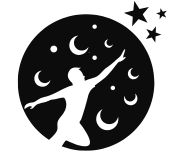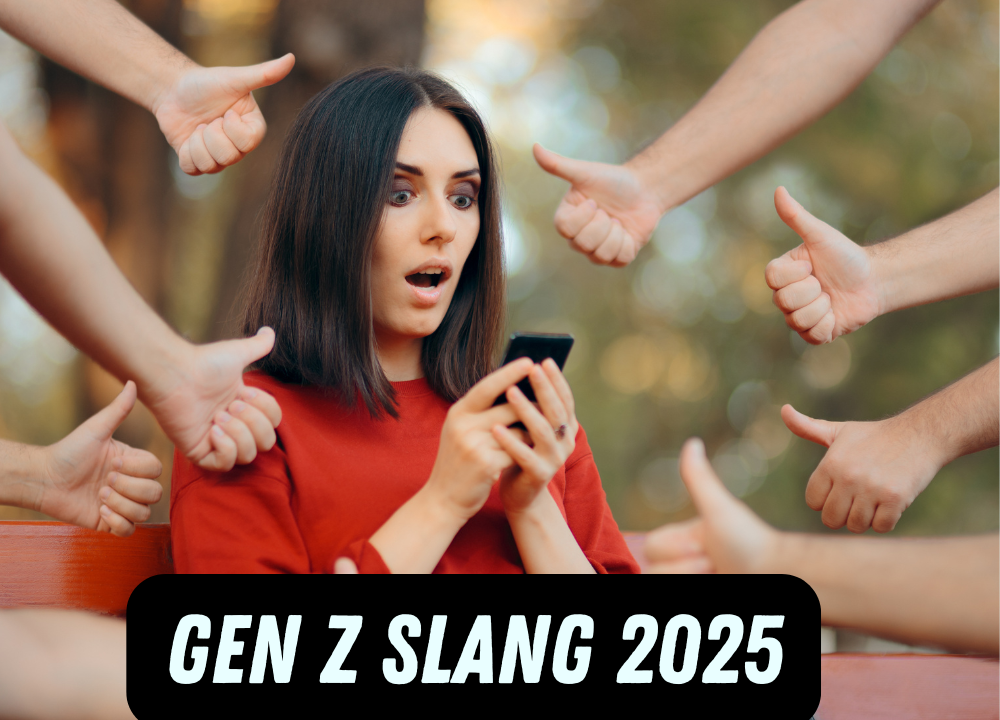In 2025, understanding Gen Z slang is more important than ever. Language shapes how we connect and communicate. With social media driving trends, new terms pop up all the time. What once seemed cool can quickly fade. This slang reflects the culture, values, and humor of a generation.
Introduction To Gen Z Slang In 2025
Understanding this slang is important for everyone. It helps bridge gaps between generations. It also gives insight into values and trends of this group.
Why Understanding Gen Z Slang Matters In 2025
Understanding Gen Z slang in 2025 is essential. It allows better communication with younger generations. Using their language makes conversations easier. It shows respect for their culture and values.
Here are some reasons why it matters:
- Connection: Using slang can create a bond with Gen Z.
- Relevance: Knowing their terms helps in discussions about trends.
- Social Media: Slang is all over platforms like TikTok and Instagram.
- Marketing: Brands can connect better with Gen Z consumers.
Many companies study Gen Z slang to improve their marketing. They want to attract younger customers. The table below shows some popular terms from 2025:
| Term | Meaning |
|---|---|
| Vibe Check | Assessing someone’s mood or feelings. |
| Bet | Agreement or confirmation. |
| Cap/No Cap | Lie/No lie; truthfulness. |
How Slang Reflects Cultural Trends
Slang is a mirror of society. It shows how culture changes over time. In 2025, Gen Z slang reflects their views and experiences.
Language often responds to cultural shifts. Here are some trends seen in Gen Z slang:
- Inclusivity: Terms often promote acceptance and diversity.
- Digital Influence: Online culture shapes language rapidly.
- Activism: Slang often relates to social issues and movements.
For example, words related to mental health have gained popularity. This shows the importance of well-being in their lives. Slang captures the essence of current events and issues. It keeps evolving as society changes.
What’s New In Gen Z Slang For 2025?
This year, slang reflects cultural shifts and social media influence. Let’s explore what’s new in Gen Z slang for 2025.
Popular Slang Terms And Their Meanings
New slang terms often emerge from social media and popular culture. Here are some of the most popular slang terms for 2025, along with their meanings:
| Slang Term | Meaning |
|---|---|
| Bet | A way of agreeing or confirming something. |
| Cap/No Cap | Cap means a lie. No cap means truth. |
| Flex | To show off or brag about something. |
| Simp | Someone who shows excessive attention to someone else. |
| Vibe Check | Assessing the mood or energy of a person or place. |
These terms have become part of everyday language. Young people use them in conversations, texts, and on social media. Understanding their meanings can help communicate better with Gen Z.
Emerging Trends In Slang Usage
Slang usage is changing rapidly. In 2025, some trends stand out:
- Shortened Words: Many terms are becoming shorter for quick communication.
- Social Media Influence: Platforms like TikTok shape new slang. Trends spread quickly.
- Inclusivity: Slang often reflects diverse identities and cultures.
- Humor: Many terms use humor or irony. This makes conversations more fun.
Young people love to create and adapt slang. It keeps language dynamic and exciting. Understanding these trends is essential for better communication.
Social Media’s Influence On Gen Z Slang
Gen Z slang is evolving quickly, especially in 2025. Social media plays a huge role in this change. Platforms like TikTok, Instagram, and Twitter shape how young people communicate.
Platforms Driving New Slang
Social media platforms are key to the creation and spread of new slang. Each platform has its own style and audience, which shapes the language used. Here are some major platforms driving slang in 2025:
- TikTok: Short videos make quick phrases popular. Challenges and trends often introduce new words.
- Instagram: Visual content helps create slang around fashion and lifestyle. Captions often use trendy phrases.
- Twitter: Character limits push users to be creative with language. Hashtags can turn phrases into trends.
These platforms encourage creativity. They allow users to play with language. Here’s a table showing how each platform influences slang:
| Platform | Influence on Slang |
|---|---|
| TikTok | Popularizes phrases through trends and challenges. |
| Creates slang around images and captions. | |
| Encourages concise, impactful language through tweets. |
Users on these platforms often follow popular influencers. These influencers introduce slang that quickly spreads. The cycle of creation and adoption happens in real-time.
Viral Slang Words And Hashtags In 2025
In 2025, several slang words and hashtags have gone viral. These terms reflect current trends and cultural moments. Some popular slang words include:
- Bet: A way to agree or confirm something.
- Cap/No Cap: To lie or tell the truth.
- Simp: Someone who shows excessive attention to someone else.
Hashtags also play a vital role in spreading slang. They connect conversations across platforms. Here are some notable hashtags:
- #FYP (For You Page): A tag used on TikTok to reach a wider audience.
- #VibeCheck: A way to ask if someone is in a good mood.
- #CancelCulture: A term for withdrawing support from someone due to their actions.
These words and hashtags evolve quickly. They often reflect deeper social issues or trends. New slang can emerge from memes, challenges, or viral videos. Understanding these terms helps bridge communication gaps. They make conversations more relatable and fun.
Context Matters: How Gen Z Uses Slang
Context plays a key role in how they use slang. Words and phrases can shift meaning based on where they are said. This dynamic nature makes it crucial to grasp how Gen Z communicates both in everyday conversations and online.
Everyday Conversations Vs. Online Usage
Gen Z uses slang differently in face-to-face talks compared to online interactions. In daily life, slang is often more casual and spontaneous. Here are some points to consider:
- In-person slang tends to be shorter.
- Facial expressions and body language add meaning.
- Slang may reflect local culture and trends.
Online, the context changes. Here, slang can evolve quickly. It often becomes more playful or exaggerated. Platforms like TikTok and Twitter influence this shift. Some key differences include:
| Aspect | Everyday Conversations | Online Usage |
|---|---|---|
| Formality | More formal | Less formal, more playful |
| Speed of Change | Slower | Rapidly changes |
| Influence | Local trends | Global trends |
Online, Gen Z often uses memes and trends. This makes slang more visual and interactive. They blend words with images and videos. This creativity keeps language fresh and engaging.
How Slang Adapts To Regional And Global Contexts
Gen Z slang adapts based on geography. Different regions have unique slang terms. For example, what works in New York may not be popular in Los Angeles. Here are some ways slang varies:
- Local dialects influence word choice.
- Cultural events shape slang meaning.
- Global trends mix with local language.
Social media connects Gen Z worldwide. This creates a blend of languages and phrases. Words can quickly spread across borders. For instance:
- “Bet” means agreement.
- “Lit” signifies excitement.
- “Flex” refers to showing off.
These terms may start in one place but grow globally. Local slang can also be adopted by others. This mix makes language richer and more diverse.
Decoding The Meanings Of Trending Slang Words
Decoding the meanings of trending slang words can be fun. It opens a window into the culture and mindset of Gen Z.
Commonly Used Slang And Their Definitions
Here are some common slang words used by Gen Z in 2025. Each word has its own unique meaning. Learning these can help you understand conversations better.
| Slang Word | Definition |
|---|---|
| Bet | Agreement or approval. |
| Cap/No Cap | Lie/No lie. Used to indicate truth. |
| Flex | Show off or brag. |
| Ghosting | Suddenly stopping all communication. |
| Lit | Exciting or fun. Often refers to parties. |
| Salty | Upset or bitter about something. |
These terms help express feelings and ideas quickly. They often replace longer phrases. Here are a few examples of how these words fit into daily life:
- “That movie was so lit!”
- “I can’t believe he just ghosted me.”
- “Stop flexing on social media.”
Examples Of Slang In Action
Understanding slang requires seeing it used in context. Here are some scenarios showing slang in action. These examples reflect real conversations among Gen Z.
- Scenario 1: At a party, one friend says, “This place is lit!”
- Scenario 2: After a friend suddenly stops texting, another says, “I think he’s ghosting me.”
- Scenario 3: During a discussion about a new phone, someone might say, “Stop flexing your new phone on us.”
Using slang can make conversations feel more casual and friendly. It shows connection and understanding. Keep practicing these words to become more fluent in Gen Z culture.
The Evolution Of Gen Z Slang
Slang reflects culture, trends, and technology. It shows how language adapts over time. In this section, we will explore how Gen Z slang has changed from 2020 to 2025 and what we might expect in the future.
Comparing Slang From 2020 To 2025
Slang from 2020 seems different from the terms we hear in 2025. Words that were popular in 2020 may feel outdated now. Here are some key changes:
| Year | Popular Slang | Meaning |
|---|---|---|
| 2020 | Lit | Exciting or fun |
| 2020 | Cap/No Cap | Lie/No lie |
| 2025 | Bet | Okay or sure |
| 2025 | Drip | Stylish or cool |
In 2020, words like “lit” and “cap” were common. By 2025, “bet” and “drip” are more popular. This shows how quickly slang evolves. Some terms fade away, while new ones take their place. Social media plays a big role in this change. Trends spread fast, and slang adapts to new situations.
- Social media influences slang evolution.
- New phrases often start on platforms like TikTok and Twitter.
- Regional differences affect how terms are used.
Understanding these changes helps in communication. It helps bridge the gap between generations.
What’s Next For Gen Z Slang?
The future of Gen Z slang is hard to predict. New trends emerge quickly. Here are some possibilities for slang in the next few years:
- More use of abbreviations. Shorter words save time.
- Increased blending of languages. Mixing languages reflects diversity.
- Influence from global cultures. Slang will include more international terms.
As Gen Z matures, slang may become more refined. It might reflect deeper cultural themes. Some words may shift in meaning based on social changes. Keeping up with these changes is important for effective communication.
Here’s a quick look at possible future slang trends:
| Trend | Description |
|---|---|
| Abbreviations | Using even shorter forms of words |
| Language Mixing | Combining English with other languages |
| Global Influence | Adopting slang from different cultures |
Gen Z slang will continue to evolve. Understanding these changes can lead to better conversations. It helps people stay connected across generations.

